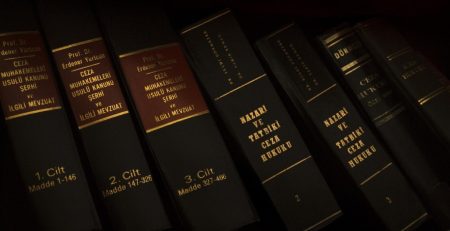Singapore’s amended Copyright Act extends rights to wedding photos of photographers
From November 2021, photographers in Singapore will be thrilled when they know that all of their works will now be their intellectual properties, even if the photos they take are from the request of contracting parties like wedding couples, parents of a birthday boy and girl, or even CEO of a multinational company.
Singapore’s amended Copyright Act extends rights to wedding photos of photographers
Not just wedding photos but all photos, in general, will belong to the photographers. Not just photos but portraits, engravings, sound recordings, and films will automatically belong to the creator of those works, according to the recent amendment of the Singapore Copyright Act.
The creator here refers to the individual, organizations like photographers or videographers, etc. that are hired by parties or entities to create these artworks for them, regardless of the purposes such as birthdays, anniversaries, or weddings.
Nonetheless, this doesn’t mean that from November 2021, the contracting parties will have to hire the photographers to take pictures, and then they have to pay additional fees to request the transfer of ownership of those pictures from the photographers.
That will be absurd and will create more problems for both the creators and the contracting parties, which is not the goal of the amendment of the Copyright Act. The ultimate goal of any amendment, the introduction of any law is to protect the legitimate rights or interests of the people and at the same time, doesn’t interfere or create obstacles, hindrances in the enforcement of the law.
Nonetheless, from now on, during the negotiation before the event transpires, the contracting parties and the creator of the artworks will have to discuss beforehand the transfer of ownership of his/her works so that there will be no issues incurs during or after the event has happened.
Is the change better for the creators or create a hindrance to all parties?
At the moment, the contracting parties who hired the photographer, videographer, artist, etc. are the default first owners of the copyright of the works that are produced before, during, or after their event has taken place according to the contract between parties.
With the introduction of the new rules, this seems to be a ‘chicken tendon’ which means it won’t affect anything or create any differences. While this may be true to most of the cases where the contracting parties and the creators are only some individuals with small scales that are negotiable in goodwill, it will be incredibly beneficial for the creator’s side when the contracting parties are big, multinational corporate.
This is because the voice of the creator is normally unheard of or neglect when the ‘hearers’ are big corporations with hundreds or thousands, tens of thousands of employees.
Accordingly, the big commissioning parties may use their power to have a better deal and/or even strip the creators of their rights.
To address the inequality of bargaining power between large commissioning parties and creators who may be individual freelancers or are from small- and medium-sized enterprises, the amendment of the Copyright Act of Singapore has been introduced. With these changes, it will, to some degree, level the playing fields and give the creators of artworks more rights and more voices when negotiating or bargaining with the contracting parties.
Furthermore, the amendment also opens up other opportunities for other types of commissioned works such as literary and dramatic works, songs, and computer graphics, etc.
The delicate situation of wedding photographs
George Hwang, director at George Hwang in Singapore stated about the amendment of the copyright act and its role in the new era: “We are now in the era of the gig economy. The creative industry is one where many people are not hired on a full-time but on a contractual basis. Their bargaining position is naturally weaker when compared to the corporate entity which hires them. These entities will have their contracts re-drafted to take into account the new law quite easily.”
Regarding wedding photography, Yvonne Tang, director of intellectual property at Drew & Napier in Singapore, said that this aspect may be viewed as a particularly unique situation, distinguishable from other types of works such as sound recordings or films commissioned by a company for a corporate flyer or event.
This is because wedding photos are extremely of personnel nature and in this situation, the ‘underdog’ side may be the newlywed couples cause they won’t have enough knowledge about this aspect and might be taken advantage from the creators themselves: “From the bargaining inequality perspective, it may, in fact, be the subject of wedding photography, namely the couple itself, as individuals, that lack familiarity and experience in the area, as compared to entities experienced in the wedding photography industry. Given that wedding photography may be considered to be highly personal in nature, there may be stronger reasons for ensuring that the couple’s rights are respected and protected.”
She further clarifies the situation of the wedding photos and points out the methods that newlywed couples may apply to protect their rights: “For completeness, it should be noted that other laws, such as the Personal Data Protection Act (PDPA), continue to be applicable. The PDPA may restrict the manner and situations where a photographer may use wedding photographs and couples will have recourse to such laws if needed.”
The transfer of rights from the creators to the contracting parties
As mentioned above, if both parties don’t want to have issues during the process of working with each other, they should and need to negotiate it clearly before the event transpires.
This is to avoid some situations when the creators might use this amendment to their own benefits and threaten, even blackmail the contracting parties to pay them more in order to make them give up their ownership of their works.
For example, normally a couple can only have one wedding in their lifetime and the ceremony takes place in harmony, everyone is joyful. But after the wedding, the photographer says that the couple will have to pay him/her extra money in order to make him/her waive their rights to the photographs.
Knowing that they are tricked but the couple won’t be able to do anything. They can’t just remarry, invited all their relatives from across the world to the wedding again, and hired another photographer after carefully examining the contract this time. So, most of them will agree to the situation and knowing that they are blackmailed during the happiest day of their life.
Although this scenario sounds imaginative in reality, there have been many similar examples of this, especially in the case of informal engagements involving a wedding photographer where a written agreement may be non-existent.
George Hwang, director at George Hwang in Singapore said about the situation where the creators might hold on to their rights: “There is nothing one can do if the owner does not want to waive his rights. Therefore, it is best to negotiate and have the rights of the parties very clearly stated at the time of contracting.”
Yvonne Tang also discussed the waiving of rights of creators, but on the point of view of the creators and their utilization of these provisions: “It is possible that many creators would be willing to cede their rights to own the commissioned works. It was explained, during the Second Reading of the Copyright Bill in Parliament, that this amendment is envisioned to improve the bargaining power of the creators. It was also acknowledged that there is usually an inequality of bargaining power between commissioning parties, such as big corporations, and the creators, such as individual freelancers. The creators typically have less room to negotiate the terms of an agreement in their favor. In reality, notwithstanding the amendment, the power imbalance may remain, for it is not unimaginable that there will be creators who would readily cede ownership rights, leading to other creators being pressurized to follow suit, to remain competitive.”
On the other hand, George Hwang states that the amendment might not create that many changes to society in practice: “Bargaining positions are dependent on commercial factors, supply, and demand, not default ownership which can be easily transferred.”
*** Other Articles***
– You could visit here to see Procedure of Singapore Trademark Registration.
– You could visit here to check the required documents for filing trademark in Singapore
– You can also check the Fee of Trademark In Singapore here.
– You could check how to register trademark in Singapore here.
Contact AAA IPRIGHT: Email: [email protected]
Or sending your inquiry by filling the form:











